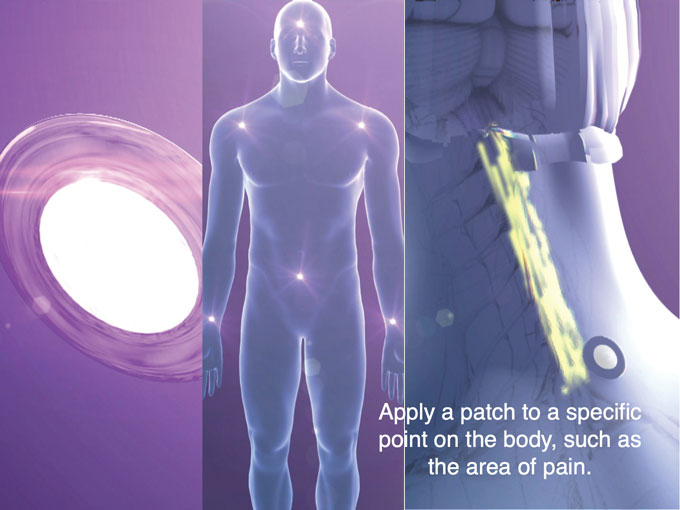Infrared light therapy has a long and fascinating history, tracing its roots all the way back to the ancient Greeks and Egyptians. Over the centuries, this non-invasive therapy has evolved and undergone significant advancements, finding its place in the modern medical world. From treating various skin conditions to providing pain relief, the application of infrared light has proven to be an effective and versatile healing method. In this article, we will take a closer look at the intriguing history and exciting evolution of infrared light therapy and explore how it continues to benefit countless individuals today.
Invention of Infrared Light Therapy
Discovery of Infrared Radiation
The invention of infrared light therapy can be traced back to the discovery of infrared radiation. In 1800, Sir William Herschel made a groundbreaking observation while conducting experiments with sunlight. He noticed an increase in temperature beyond the red portion of the visible light spectrum. This led him to believe that there must be an invisible form of light with heating properties. Herschel named this invisible radiation “infrared,” meaning “below red.”
Early Experiments with Infrared Light Therapy
Following Herschel’s discovery, scientists and physicians began experimenting with the therapeutic effects of infrared light. The initial focus was on using infrared light for its heating properties. In the late 19th century, Dr. Niels Ryberg Finsen developed phototherapy, a treatment that utilized focused infrared light to combat tuberculosis of the skin. Finsen’s work laid the foundation for the future development of infrared light therapy.
Development of Infrared Lamps
The development of infrared lamps marked a significant milestone in the advancement of infrared light therapy. In the early 20th century, Dr. John Harvey Kellogg designed the first commercially available infrared lamp. These lamps emitted infrared radiation and were used for various medical purposes, including pain relief, wound healing, and improved blood circulation. The invention of infrared lamps made infrared light therapy more accessible to the general population.
Advancement of Infrared Light Therapy
Medical Applications of Infrared Light Therapy
Infrared light therapy found widespread applications in the medical field. It was used to treat various conditions, such as arthritis, muscle pain, joint stiffness, and even some types of cancer. The therapeutic effects of infrared light therapy were attributed to its ability to penetrate deep into tissues, stimulating cellular activity and promoting healing. Medical professionals began to recognize the potential of infrared light therapy as a non-invasive and drug-free treatment option.
Development of Infrared Saunas
Infrared saunas emerged as a popular form of infrared light therapy. These saunas utilize infrared lamps to emit radiant heat, creating a soothing and therapeutic environment. The heat produced by infrared saunas penetrates the body, inducing sweating and providing numerous health benefits. Infrared saunas gained recognition for their ability to detoxify the body, boost the immune system, and promote relaxation. They became a popular choice for individuals seeking holistic wellness and rejuvenation.
Infrared Light Therapy in Sports
Infrared light therapy also found its way into the world of sports. Athletes discovered the benefits of infrared light therapy for muscle recovery and injury prevention. The deep heat generated by infrared light therapy helped relax muscles, reduce inflammation, and accelerate the healing process. Sports professionals began incorporating infrared light therapy into training programs and recovery protocols, leading to enhanced performance and reduced downtime due to injuries.
Scientific Understanding of Infrared Light Therapy
Understanding Infrared Radiation’s Effects on the Body
Scientific research has shed light on how infrared light therapy affects the body. It has been found that infrared radiation can penetrate the skin and reach deeper layers of tissues and organs. The absorption of infrared radiation by cells stimulates mitochondria, which are responsible for energy production. This activation of mitochondria boosts cellular metabolism and promotes various physiological processes, such as tissue repair, regeneration, and anti-inflammatory responses.
Mechanisms of Action in Infrared Light Therapy
Infrared light therapy triggers several mechanisms of action in the body. One of the key mechanisms is the release of nitric oxide, a molecule that plays a crucial role in vasodilation and improved blood flow. By increasing blood circulation, infrared light therapy enhances oxygen and nutrient delivery to tissues, promoting healing and reducing inflammation. Additionally, it stimulates the production of endorphins, natural pain-relieving compounds, providing relief from discomfort.
Research on Infrared Light Therapy
The scientific community continually conducts research to gather evidence on the effectiveness of infrared light therapy. Numerous studies have been conducted to explore its potential applications and benefits. Research has indicated positive outcomes in various areas, such as pain management, wound healing, and skin rejuvenation. However, further research is needed to fully understand the optimal dosages, treatment protocols, and long-term effects of infrared light therapy.
Benefits of Infrared Light Therapy
Pain Relief and Inflammation Reduction
One of the significant benefits of infrared light therapy is its ability to relieve pain and reduce inflammation. The deep penetration of infrared radiation into tissues helps target pain at its source by promoting blood flow and triggering the release of natural pain-relieving substances. Infrared light therapy has shown promising results in alleviating chronic pain conditions, such as arthritis, fibromyalgia, and musculoskeletal injuries.
Wound Healing and Tissue Repair
Infrared light therapy has demonstrated remarkable potential in wound healing and tissue repair. The increased circulation and cellular activity induced by infrared radiation promote the production of collagen, a protein essential for wound healing. Additionally, infrared light therapy enhances the proliferation of fibroblasts, cells responsible for tissue repair. As a result, it accelerates the healing process, reduces scarring, and promotes healthy skin regeneration.
Improved Circulation and Cardiovascular Health
One of the indirect benefits of infrared light therapy is improved circulation, which contributes to better cardiovascular health. By expanding blood vessels and enhancing blood flow, infrared light therapy enhances oxygenation of tissues and removal of metabolic waste products. This improved circulation benefits not only localized areas but also the entire body, supporting heart health and overall well-being.
Application of Infrared Light Therapy
Treatment of Chronic Conditions
Infrared light therapy has become a favored treatment option for various chronic conditions. Its non-invasive nature and lack of side effects make it an appealing choice for individuals seeking long-term relief. Conditions such as arthritis, fibromyalgia, neuropathy, and chronic pain syndromes have shown positive responses to infrared light therapy. It provides a non-pharmaceutical alternative for managing symptoms and improving quality of life.
Beauty and Skincare
Infrared light therapy has gained popularity in the beauty and skincare industry. Its ability to stimulate collagen production, improve blood circulation, and promote cellular regeneration makes it a sought-after treatment for anti-aging, acne, and overall skin rejuvenation. Infrared light therapy is often used in conjunction with other skincare procedures to enhance their effectiveness and provide long-lasting results.
Athletic Performance Enhancement
Athletes and sports enthusiasts have recognized the performance-enhancing benefits of infrared light therapy. Its ability to accelerate muscle recovery, reduce inflammation, and improve circulation contributes to enhanced athletic performance. Infrared light therapy is integrated into training programs and recovery protocols to minimize downtime, prevent injuries, and optimize physical performance.
Different Types of Infrared Light Therapy
Near Infrared (NIR) Therapy
Near infrared therapy utilizes infrared light with wavelengths ranging from 700 to 1400 nanometers. It is often referred to as “low-level” light therapy and is used for surface-level treatments. Near infrared therapy has been found to have anti-inflammatory effects, promote tissue healing, and improve skin conditions.
Mid Infrared (MIR) Therapy
Mid infrared therapy utilizes infrared light with wavelengths ranging from 1400 to 3000 nanometers. It penetrates deeper into the skin and tissues and is often used for musculoskeletal conditions, such as joint pain, muscle injuries, and rheumatoid arthritis. MIR therapy effectively targets deep pain and inflammation.
Far Infrared (FIR) Therapy
Far infrared therapy utilizes infrared light with wavelengths ranging from 3000 to 10000 nanometers. It is known for its ability to penetrate deeply into the body, reaching organs and tissues. FIR therapy is commonly used in saunas and is associated with detoxification, improved circulation, relaxation, and pain relief.
Safety Considerations
Potential Side Effects
While infrared light therapy is generally considered safe, there are some potential side effects to be aware of. These may include temporary redness, increased temperature sensation, and skin dryness. It is essential to follow proper safety guidelines and consult with a healthcare professional before starting infrared light therapy, especially if you have any pre-existing medical conditions or take medications.
Safety Guidelines and Precautions
To ensure the safe and effective use of infrared light therapy, it is important to follow safety guidelines. These include using appropriate protective eyewear to shield the eyes from intense light, avoiding excessive exposure to infrared radiation, and monitoring skin reactions during treatment. It is also advisable to consult with a healthcare professional to determine the appropriate treatment plan and address any individual concerns or risk factors.
Contradictions of Infrared Light Therapy
While infrared light therapy can be beneficial for many individuals, it may not be suitable for everyone. There are certain contradictions to consider, such as pregnancy, certain skin conditions, active infections, and sensitivity to heat. Individuals with these conditions should consult with a healthcare professional before undergoing infrared light therapy to ensure their safety and well-being.
Commercial Availability of Infrared Light Therapy
Availability in Medical Facilities
Infrared light therapy has become a widely available treatment option in various medical facilities. Clinics, hospitals, and rehabilitation centers often incorporate infrared light therapy into their treatment protocols. Medical professionals utilize specialized equipment, such as infrared lamps and panels, to deliver targeted infrared radiation to specific areas of the body.
Home Use Devices
The popularity of infrared light therapy has led to the development of home use devices. These devices are designed to provide convenient access to infrared light therapy in the comfort of one’s own home. Home use devices include handheld infrared wands, infrared heating pads, and infrared saunas. The availability of these devices allows individuals to incorporate infrared light therapy into their daily routines and benefit from its therapeutic effects.
Popularity and Global Adoption
Infrared light therapy has gained popularity around the world, with an increasing number of people recognizing its potential health benefits. Its non-invasive nature, affordability, and versatility have contributed to its global adoption. From healthcare professionals to wellness enthusiasts, infrared light therapy has become a favored choice for natural and holistic treatments.
Future of Infrared Light Therapy
Emerging Technologies and Innovations
The future of infrared light therapy holds promising advancements in technology and innovation. Researchers are exploring new ways to optimize the delivery methods of infrared radiation, such as wearable devices and targeted treatment systems. Additionally, advancements in nanotechnology may lead to the development of more efficient and targeted infrared therapies.
Integration with Other Medical Treatments
Infrared light therapy is likely to become an integral part of various medical treatments. Its synergistic effects with other therapies, such as physical rehabilitation, wound care, and cancer treatments, are being explored. By combining infrared light therapy with conventional treatments, healthcare professionals can potentially enhance the overall efficacy and outcomes of patient care.
Research and Development Efforts
The scientific community continues to invest in research and development efforts to further understand the mechanisms and potential applications of infrared light therapy. Ongoing studies aim to uncover additional therapeutic benefits, optimize treatment protocols, and explore new areas of application. As research progresses, infrared light therapy is expected to continue evolving and expanding its significance in healthcare.
Conclusion
The invention and evolution of infrared light therapy have revolutionized the field of healthcare and wellness. From its humble origins in the discovery of infrared radiation to its widespread use in medical facilities and homes, infrared light therapy has proven to be a versatile and effective treatment modality. With its numerous benefits and minimal side effects, it has become a preferred choice for pain relief, wound healing, skincare, and athletic performance enhancement. As scientific understanding and technological advancements continue to deepen, the future of infrared light therapy holds even greater potential for improving human health and well-being.





